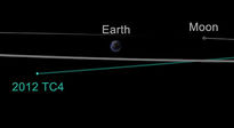NASA Detects More Chemicals on Titan that are Essential to Life
NASA Detects More Chemicals on Titan that are Essential to Life Saturn’s largest moon Titan may be the most fascinating piece of real-estate in the Solar System right now. Not surprising, given the fact that the moon’s dense atmosphere, rich organic environment and prebiotic chemistry are thought to be similar to Earth’s primordial atmosphere. As such, scientists believe that the moon could act as a sort of laboratory for studying the processes whereby chemical elements become the building blocks for life. These studies have already led to a wealth of information, which included the recent discovery of “carbon chain anions” – which are thought toRead More →
